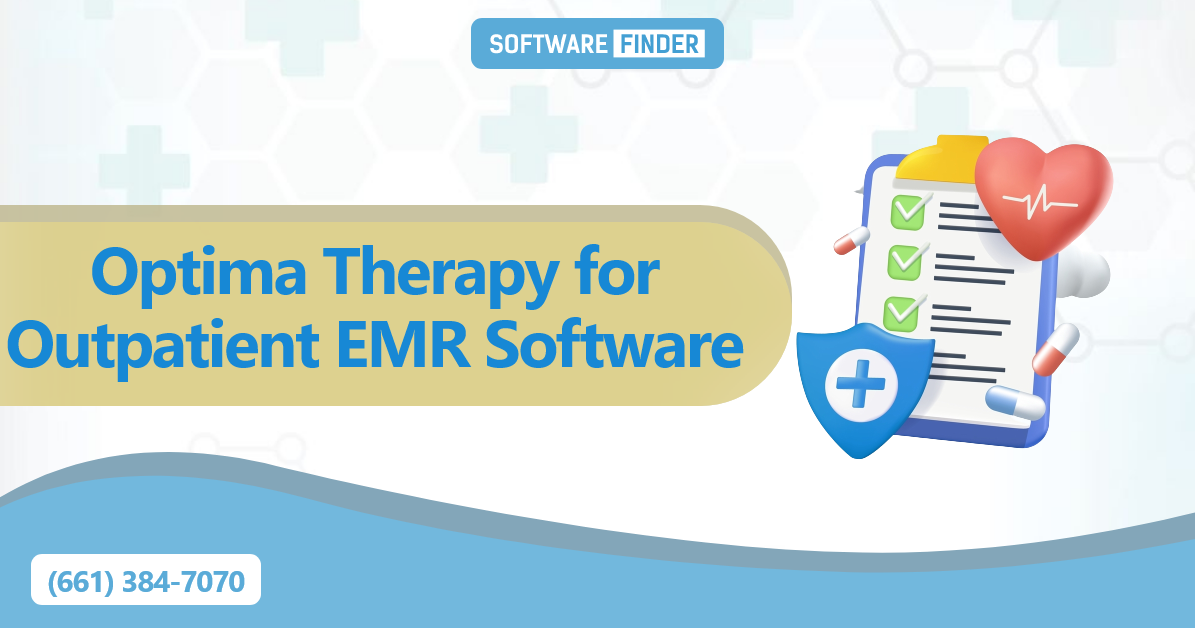Whether your facility is a hospital, clinic, or ambulatory surgery center, outpatient treatment is the preferred method of care. Outpatient EMR procedures cost less, require fewer healthcare resources, and don’t involve staying overnight.
EHR systems are a necessity for these types of facilities. Here are a few ways they can help you optimize outpatient care:
-
Improved Patient Care
The main driver of this industry growth is the shift in healthcare from hospital-based procedures to ambulatory care. Specifically, physicians’ offices account for nearly half of ambulatory healthcare services receipts. This is due to patients seeking care at outpatient facilities that offer more affordable and convenient treatment options. Using EHR/EMR systems in these outpatient locations improves patient care, increases the number of treatments, and helps physicians to get reimbursed quicker.
These digital records make it easy for doctors to access the information they need — even when they are on the go, so that no detail is overlooked. This allows for better diagnosis and a more efficient workflow. It also reduces costs and minimizes errors by eliminating the need to repeat testing or duplicate prescriptions. Additionally, a robust EHR system allows medical staff to communicate with each other more effectively, so that they can stay up-to-date on their patients’ progress and status.
Enhanced treatment also leads to more revenue for outpatient clinics. For example, telehealth technology can be used to conduct diagnostic tests from a remote location. Moreover, automated prior authorization alerts can help ensure that claims are submitted correctly and on time to increase healthcare reimbursement. Finally, healthcare collections solutions that automate and streamline the process of collecting patient payments can dramatically improve profitability without raising rates.
An EHR is a digital version of a patient’s chart, typically for use in a single practice. An EHR is more comprehensive and can be shared between healthcare organizations. This allows medical practitioners to easily transfer a patient’s full medical history without needing to send the paper file, which can be lost or stolen.
The benefits of outpatient EHR continue with the ability to track a patient’s financial status, run eligibility checks, and avoid billing errors that can monopolize staff time later on. It’s also easy to access real-time data on patient payments, bed capacity, and nurse-to-patient ratios, all of which can be critical when it comes to reducing wait times and optimizing patient flow. In addition, a robust EHR can be used to improve staffing, performance and productivity in ways that directly affect bottom-line results.
-
Improved Efficiency
Whether you are a large healthcare practice or a small therapy clinic, efficiency is essential to operating successfully. From improved patient scheduling to better clinical documentation, increasing efficiency through the use of outpatient EMR can improve the quality of care for patients and allow your practice to grow without compromising on patient experience or cost.
Using outpatient EMR can also save valuable time for clinicians and office staff. Unlike traditional paper medical records, which must be manually retrieved and organized, EMRs are stored digitally. This allows clinicians to complete charting quickly and easily, often while still with the patient. This reduces the amount of time spent in a charting room, freeing up space for more scheduled appointments and improving productivity. It also means that therapists can document more accurately and completely, leading to better quality patient care.
The use of outpatient EMR can also help you comply with Medicare reimbursement rules and guidelines. This includes ensuring that you have properly documented each visit, meeting internal quality measures, and reporting patient outcomes. This helps you avoid costly penalties that can negatively impact your bottom line.
EMR systems are designed to meet specific needs for different types of health care providers. They include standard coding systems for various procedures, patient demographic information, and more. Many of these systems are also designed to share data with other systems, which can make for a more seamless flow of information.
Ambulatory EMRs are specifically geared towards outpatient treatment facilities and smaller practices. They are generally much simpler than inpatient EHRs and can help you with compliance standards, reimbursement regulations, and even physician performance measurement sets. With the rising preference for outpatient care over hospitalization and increased government incentives to promote EHRs, this sector of the market is expected to continue expanding at a rapid rate like ShareNote EHR.
Although some ambulatory EMRs offer nearly-do-it-all solutions, it’s important to choose a system that is right for your needs. Ideally, your ambulatory EMR should be able to connect with your inpatient EHR so that you can transfer information between the two and have a comprehensive view of your patient’s medical history.
-
Increased Revenue
Increasing revenue through the use of Outpatient EMR is one of the top concerns for ambulatory healthcare facilities and clinics. With the outpatient healthcare market expected to reach $6.6 billion in 2027, boosting revenue is essential for long-term viability.
With innovative clinical advances in minimally invasive procedures and shorter recovery times, more patients are turning to outpatient care for their health needs. This new trend has attracted attention as a lower-risk, more cost-effective revenue stream for hospitals and clinics.
Outpatient EMR is a powerful tool for increasing revenue in the healthcare industry through better patient engagement and more efficient processes. This means therapists can optimize their workflows and automate healthcare collection processes to boost their bottom line without adding additional clerical and administrative staff.
While the benefits of Outpatient EMR vary by facility, the majority of successful users see reduced costs for transcription, data entry, and other clerical work. This can equate to an average of $20,000 in annual savings for small groups and solo physicians. In addition, reduced space requirements for physical storage allow for increased utilization of clinical spaces and a decrease in costly overhead.
The ability to capture charges at the point of service allows providers to avoid losing thousands in legitimate revenues. That would have been lost in the traditional documentation process. This also enables practices to be more aggressive in negotiating reimbursement with insurance payers, which can result in higher payments.
Despite the advantages of Outpatient EMR, many independent therapists still struggle to make a profit due to high operational expenses and lack of technology. By implementing advanced RCM software tools that reduce the time and complexity of a practice’s revenue cycle. Therapists can achieve more accurate financial forecasting, maximize their efficiency and improve the patient experience.
The emergence of new healthcare trends, the increased focus on preventative and wellness care. And the broader acceptance of value-based payment models are driving outpatient revenue growth across the globe. The increased competition between hospitals and other healthcare organizations. Also driving the demand for outpatient EMR, which helps improve productivity and quality of care.
-
Better Patient Experience
In addition to boosting operational efficiency and improving patient outcomes, outpatient EMRs help increase patients’ satisfaction with their care. Satisfaction scores are key in determining whether a patient will visit their healthcare organization again or recommend it to friends and family. With a robust patient portal, patients can view their health history and schedule appointments with ease. This can greatly reduce no-show rates and improve clinic efficiency.
EMR systems have evolved into more sophisticated software solutions. That integrate with hospital systems in a way that has never before been possible. As a result, hospital departments like labs, pharmacies, and x-ray can share data and communicate with one another. Creating a more streamlined patient experience. For outpatient therapy, this means that therapists can access the same information. As other hospital departments, which allows for more accurate and consistent patient diagnoses.
For a smaller, independent private practice, an EMR can be an invaluable tool for promoting efficient clinical practices. And improving the overall patient experience. By allowing therapists to use pre-built templates designed for their specific needs. The software can make it easier than ever for them to create quality clinical documentation. This can drastically cut down on the amount of time and money needed. To pay for a transcriptionist, which in turn translates into lower overhead costs.
A more individualized approach to customer service is also possible with an EMR system. For example, a patient can simply text or email a bot with their question. And the bot will reply with a relevant answer, saving clinic staff time and providing better customer service.
Whether you are a large healthcare institution. Or a small therapy practice, efficiency is essential to the success of your business. With the right tools and resources, you can save time, money, and space while providing patients with the highest-quality care. Outpatient EMRs are an effective solution for achieving these goals, and they can be easily implemented in any clinic or practice. To learn more about how to boost your outpatient clinic’s efficiency, contact Praxis today! We offer an award-winning EHR/EMR, rated number 1 in user satisfaction by Software Advice and Capterra.




